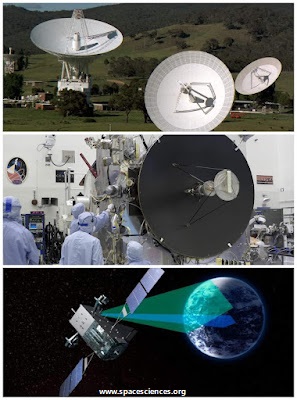Communication in Space
It's Moya NASA that keeps releasing new spacecraft, space telescopes and robots to fool the world's "smartest nation" every day. How does it communicate with them in space? Because the intelligence of "Salim" or Munir says that there are Telenor, Ufone or Zong poles in space, not that he made a package and started to pass the time by sending hours of long talks, "Shonon Munon" messages or funny jokes.
So the answer is Deep Space Network!!
The Deep Space Network is actually a network of giant dish-like radio antennas on Earth. Which is spread in different countries of the world. These antennas are in the sky day and night in Australia, Canberra, California, Spain, etc., greeting the missions sent by NASA and other agencies. These antennas are placed more or less at the same distance on the ground so that due to the rotation of the earth there is no gap when there is no antenna to pick up the signal sent from space and the signal is lost.
Spacecrafts in space transmit images and their current location via radio signals to Earth. These signals are received by these deep space antennas around the world. In addition, this network sends instructions from the ground to the spacecraft, what to do next, what pictures to take, which direction to turn, etc.
The antennas in this network pick up even the weakest signal immediately like our police. You can estimate this from the fact that in 1977, two NASA spacecraft Voyager 1 and Voyager 2, which 45 years later, billions of kilometers away. Having reached the edges of the solar system, this deep space network also picks up signals from them and is in constant communication with them until now. The signals from the Voyager spacecraft are extremely weak. How weak? 20 billion times weaker than the electrical signal that drives your ordinary digital clock!!
These antennas receive the signals from these various spacecraft and send them to NASA's Space Flight Operations Facility in California, where these signals are processed and collected into images or other important information and sent to scientists around the world. is shared with Scientists use these images and data to draw logical conclusions, write research papers and add to our knowledge of the universe.
NASA rovers on Mars, such as Curiosity or the recently launched Preservernce, also communicate with Earth in this way, but it also sends data and images back to Earth in a more efficient way. And that's through the Mars Reconnaissance Orbiter, a satellite orbiting Mars that collects data from these rovers and sends it back to the Deep Space Network on Earth. This way data is transferred more easily.





0 Comments
Please don't enter any spam link in the comment box.